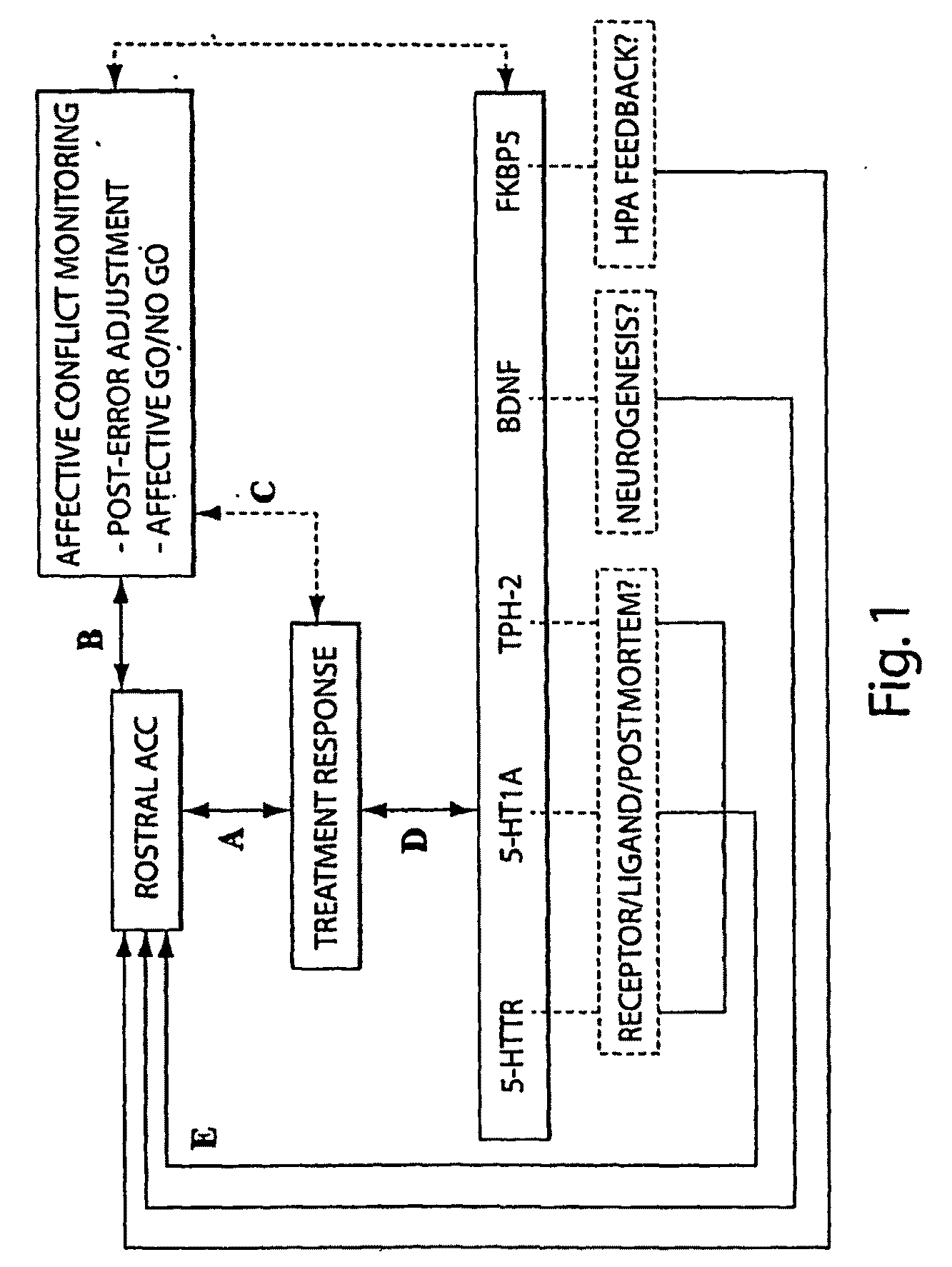Systems and methods for predicting effectiveness in the treatment of psychiatric disorders, including depression
a technology for predicting effectiveness and psychiatric disorders, applied in mental therapies, instruments, applications, etc., can solve problems such as large implications, delay of 2-3 weeks, and difficulty in treating mdd
- Summary
- Abstract
- Description
- Claims
- Application Information
AI Technical Summary
Benefits of technology
Problems solved by technology
Method used
Image
Examples
example 1
[0047]In this example, the study design involves open, prospective follow-up over a 12-week period of MDD subjects treated with standard doses of escitalopram, an antidepressant. Clinical response is defined in this example as a >50% change in Ham-D-17 (Hamilton Depression Rating Scale) scores from beginning to the end of trial. The main analysis correlates clinical responder status with behavioral, electrophysiological probes (EEG and ERP), and hemodynamic probes (fMRI) of rostral ACC (anterior cingulate cortex) function as well as with allelic variation in five candidate genes (5-HTTLPR, 5-HT1A, TPH-2, FKBP5, and BDNF). Secondary analyses will assess links between SNPs (single nucleotide polymorphisms) of these genes and behavioral / physiological measures of affective disturbance. A total sample of 85 MDD subjects will be studied using an integration of laboratory-based measures of symptom profiles, high-density EEG / ERP, fMRI, and genotyping.
[0048]Subject Recruitment. A minimum of ...
example 2
[0087]This example illustrates a novel assay for prediction of treatment response in depression.
[0088]In order to determine the specificity / sensitivity values of the rostral ACC for predicting treatment response in depression, ROC analyses and discriminant analyses was performed, as well as logistic modeling on 28-channel EEG data. (See Pizzagalli, D A, et al. (2001), “Anterior cingulate activity as a predictor of degree of treatment response in major depression: Evidence from brain electrical tomography analysis.”Am J Psychiatry 158: 405-415.)
[0089]Sixteen of the 18 subjects in this study could be considered as “clinical responders”, since their BDI dropped by more than 63% from the pre- to the post-treatment assessment (the remaining two are “non-responders”). The rostral ACC activity predicted the degree of treatment response in spite of the fact that 16 of the 18 subjects were true responders, suggesting that the rostral ACC measure can capture small variations in clinical outco...
PUM
| Property | Measurement | Unit |
|---|---|---|
| mass | aaaaa | aaaaa |
| time | aaaaa | aaaaa |
| time | aaaaa | aaaaa |
Abstract
Description
Claims
Application Information
 Login to View More
Login to View More - R&D
- Intellectual Property
- Life Sciences
- Materials
- Tech Scout
- Unparalleled Data Quality
- Higher Quality Content
- 60% Fewer Hallucinations
Browse by: Latest US Patents, China's latest patents, Technical Efficacy Thesaurus, Application Domain, Technology Topic, Popular Technical Reports.
© 2025 PatSnap. All rights reserved.Legal|Privacy policy|Modern Slavery Act Transparency Statement|Sitemap|About US| Contact US: help@patsnap.com



